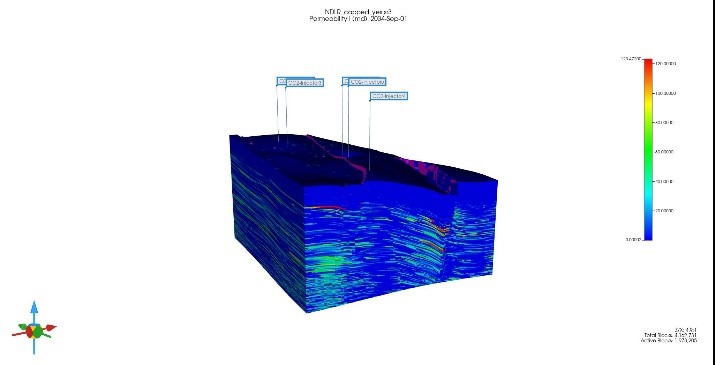A Phased Workflow to Define Permit-Ready Locations for Large Volume CO2 Injection and Storage
Ramón H. Treviño, Susan D. Hovorka, Dallas B. Dunlap, Richard C. Larson, Tucker F. Hentz, Seyyed A. Hosseini, Shuvajit Bhattacharya, and Michael V. DeAngelo
Greenhouse Gases: Science and Technology 2023, https://doi.org/10.1002/ghg.2253
Study Summary

Sequestration of CO2 from anthropogenic point sources (e.g., refineries, petrochemical facilities LNG plants, coal or gas power plants) is one important method for mitigating the human-caused climate crisis. The U.S. Environmental Protection Agency (EPA) underground injection control (UIC) Class VI rule regulates CO2 sequestration in the onshore U.S. To-date, only two UIC Class VI permits have been issued by the EPA. We illustrate a four-phase workflow to first identify regional storage resources & then down-select sites to yield permit-ready locations that can accept & store large volumes of CO2. Specific permit requirements should guide objectives and define deliverables of, respective, workflow phases. In the first phase we used available regional data and screened structure and injection zones to locate resources that match CO2 volumes planned to be captured. Available data were also used to assess presence and depth of usable groundwater, the key resource protected via permitting. We then used advanced, closed-form, analytical solutions (EASiTool) to estimate CO2 injectivity into each injection compartment. In the second phase we acquired and conditioned additional wireline logs and leased available seismic datasets. We interpreted the geologic depositional systems from wireline well-log character and mapped sandbody geometry to interpolate injection and confining-zone distribution. Using available data, we mapped faults and locations of freshwater and overpressure (or other capacity-limiting geologic parameters) in more detail. In the third phase, we used the augmented geologic data to develop a geologic model for the selected area, extracted the areas of highest interest, and generated and ran dynamic (flow) models. In a fourth phase, we reduced major uncertainties identified in earlier phases. Our case study indicates that to complete preparation of a permit application requires (1) improved lithologic characterization information (thicknesses and horizontal and vertical connectivity) and (2) better definition of poorly defined local faults.
Why is this research important and why do the results matter?
- In order to avoid the worst effects of climate change, human-generated CO2 emissions must be significantly reduced such that, eventually, the CO2 entering the atmosphere is balanced by CO2 being removed from the atmosphere (i.e., by the natural carbon cycle and by human direct removal). Geologic CO2 sequestration is an important method for permanently removing CO2 from the atmosphere.
- To meet atmospheric CO2 goals, the United States must increase annual volumes of sequestered CO2 by several hundred percent above current levels. Consequently, the number of permitted CO2 injection wells must also tremendously increase. CO2 injection wells that inject into non-petroleum producing rock units need UIC Class VI permits, whose purpose is to assure that underground sources of drinking water will not be damaged.
- Despite the fact that the UIC Class VI rule has been in effect since 2011, only two Class VI wells have been permitted as of 2023. Based on our research, we offer this workflow to help organizations seeking permits efficiently prepare successful Class VI permit applications.